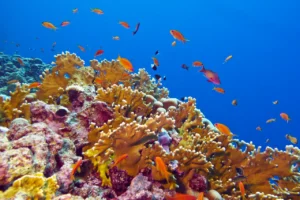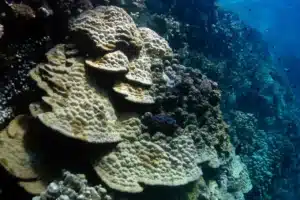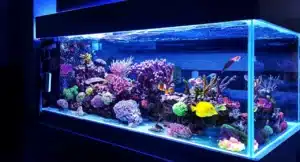How Are Coral Reefs Formed?
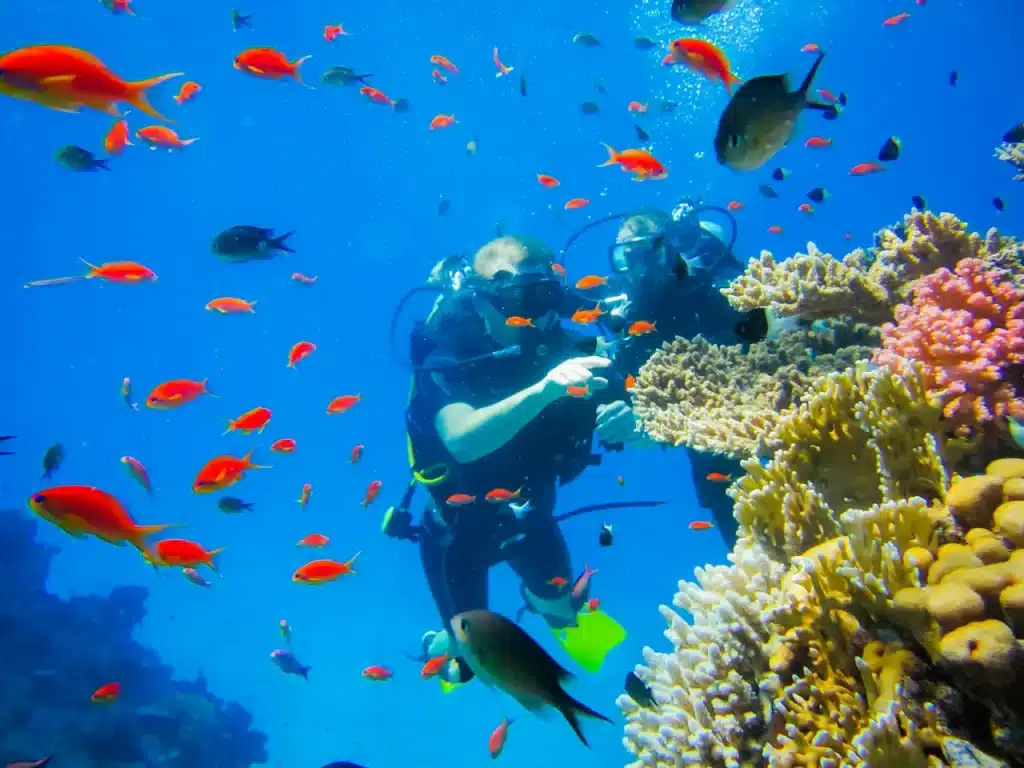
Coral reef formation involves a variety of processes operating at different spatial scales, and our discussion of how coral reefs are formed reflects that reality.
At smaller spatial scales we can examine reef building process at the level of the individual reef.
At broader spatial scales, we can consider the processes affecting the structure and formation of entire coral reef ecosystems.
How Are Individual Reefs Built?
The structural foundation of individual coral reefs is formed by a multitude of marine animals and plants through the processes of slow accumulation and deposition of calcium carbonate (limestone) extracted from seawater.
The Main Reef Builders
While a wide variety of marine life ultimately contributes to the structural complexities of coral reefs, most of the reef’s underlying solid framework is constructed by just a few types of marine organisms.
These are the “stony” corals, and the coralline red algae that grows upon and amidst the coral colonies.
Shallow marine waters are rich in calcium (Ca++) and bicarbonate (HCO3-) ions.
Hard corals and coralline algae are able to extract these raw materials from sea water, and both types of marine life have the ability to combine them to form calcium carbonate (CaCO3).
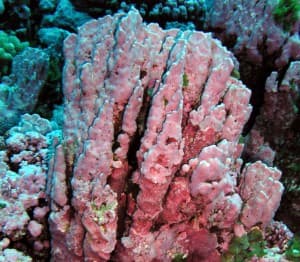
This substance, also known as limestone, is used to fashion the protectecive outer skeletons of coral polyps as well as to harden the fleshy parts of the coralline algae.
After the individual organisms die, they leave behind their limestone skeletons. Over time, the accumulated and compacted minerals contained in the multitudes of these skeletal remains become the large, solid structures we call coral reefs.
The overall reef-building process is slow; coral reefs are built over decades and centuries – not weeks or months.
Other Reef Builders
A great variety of other organisms – including many types of invertebrate animals – assist the two primary types of reef builders (discussed above) in the reef-building process by depositing lesser amounts of carbonate particles.
These minor contributors include sponges, octocorals (“soft” corals), fire corals, and many other types of invertebrates. Individually, the contribution of each of these groups may be comparatively small, but collectively their contribution can sometimes be substantial.
How Are Coral Reef Ecosystems Formed?
A great variety of other organisms – including many types of invertebrate animals – assist the two primary types of reef builders (discussed above) in the reef-building process by depositing lesser amounts of carbonate particles.
These minor contributors include sponges, octocorals (“soft” corals), fire corals, and many other types of invertebrates. Individually, the contribution of each of these groups may be comparatively small, but collectively their contribution can sometimes be substantial.
At the broader spatial scale of the entire reef ecosystem, structure and formation is shaped not only by the dominant animals and plants. Rather, interactions among a host of other abiotic (“physical”) factors AND the underlying geology of the area also come into play. In fact, these physical factors usualy represent THE dominant influences on large-scale reef structure.
Most notably, such factors include sea floor depth profile, substrate composition, water movement, light penetration, and other variables that affect hard coral species distribution, growth forms, and abundance.
These varied and complex interactions typically impose a characteristic “zonation” pattern upon the overall reef ecosystem. This is true whether the reef is of the atoll, barrier, or fringing type.
Join Our Mailing list
Get updates via email on all things coral.

